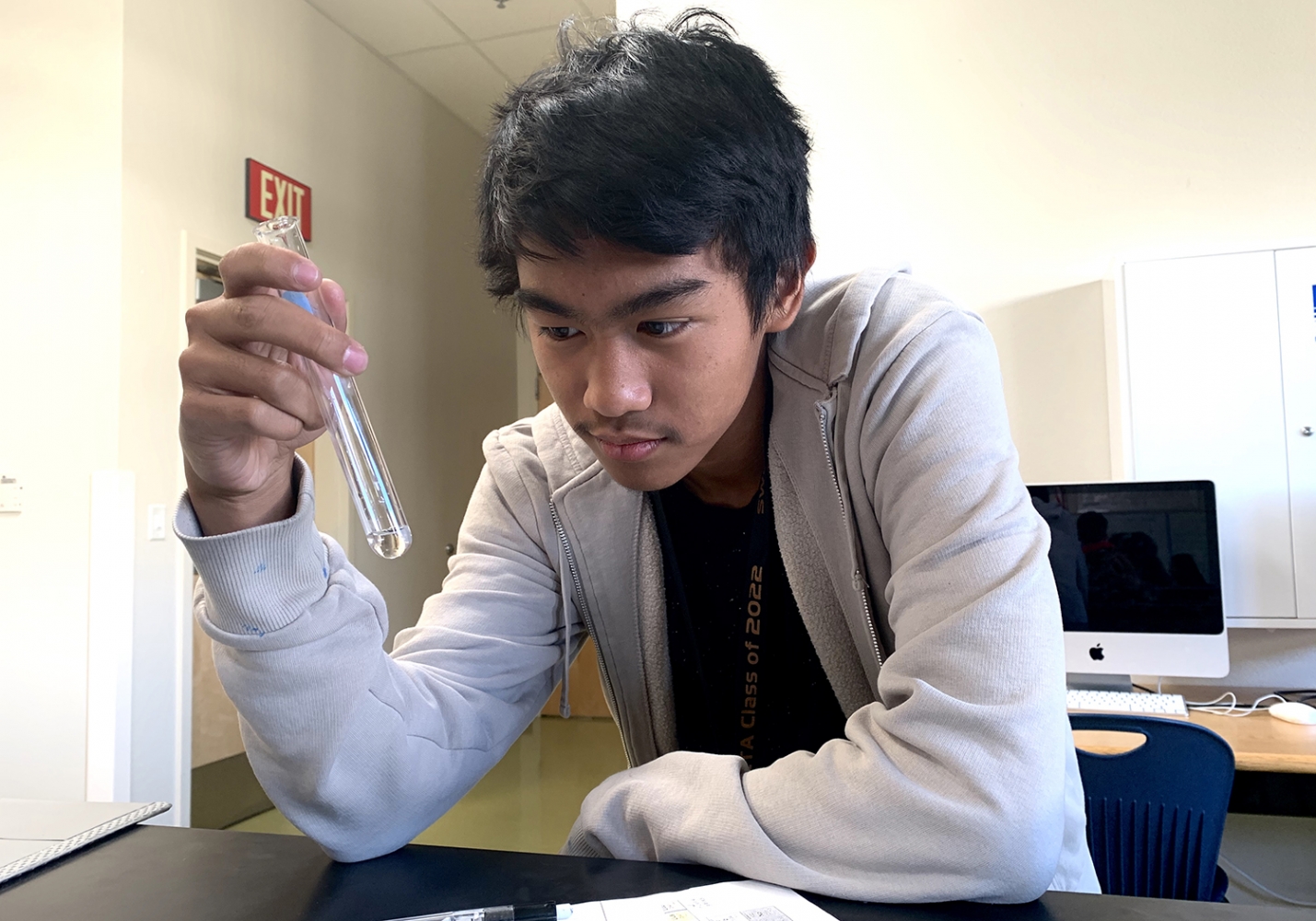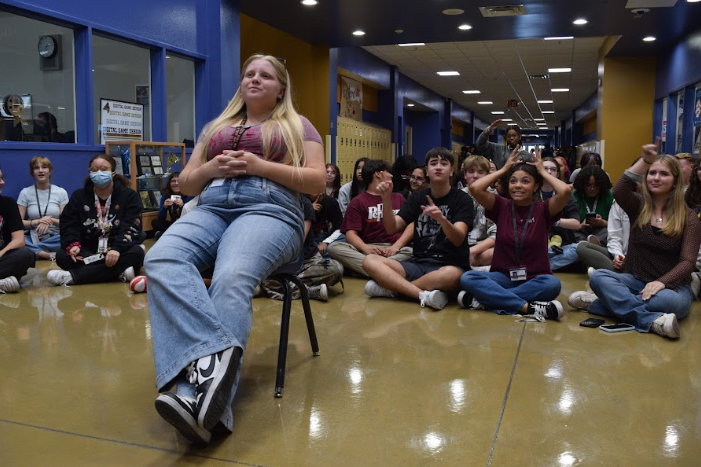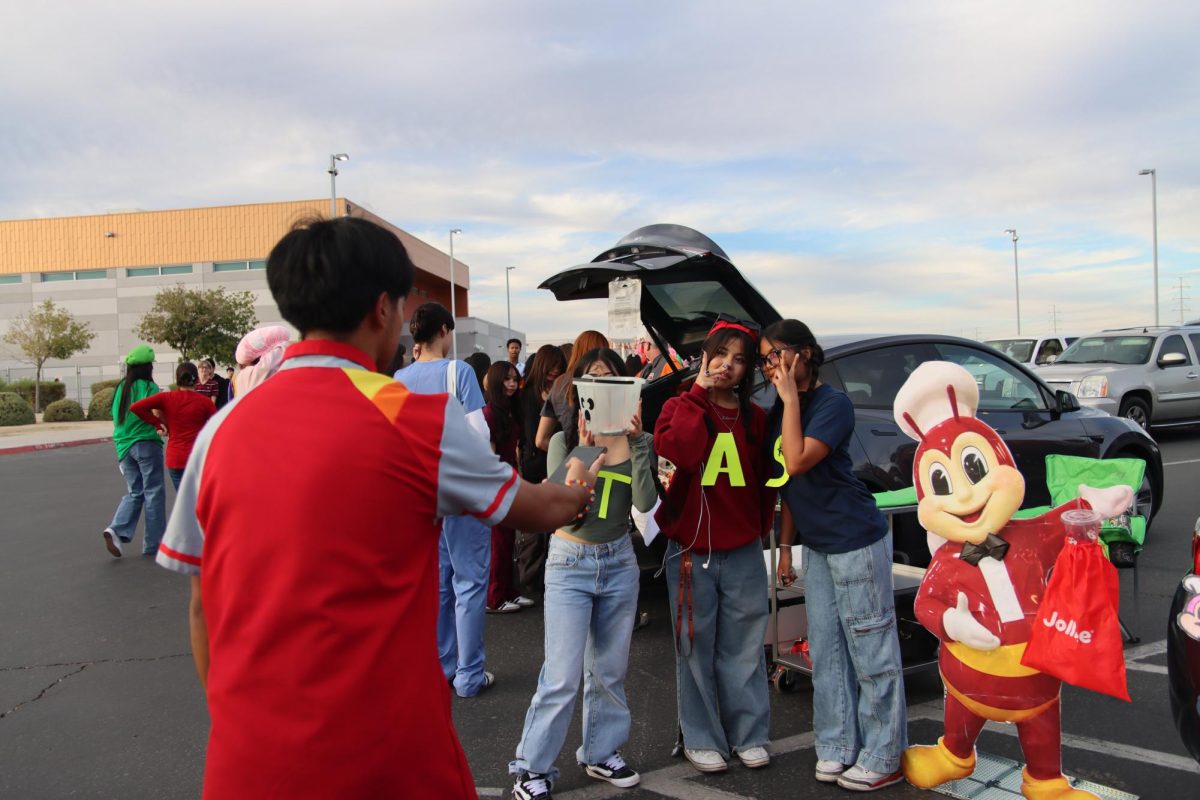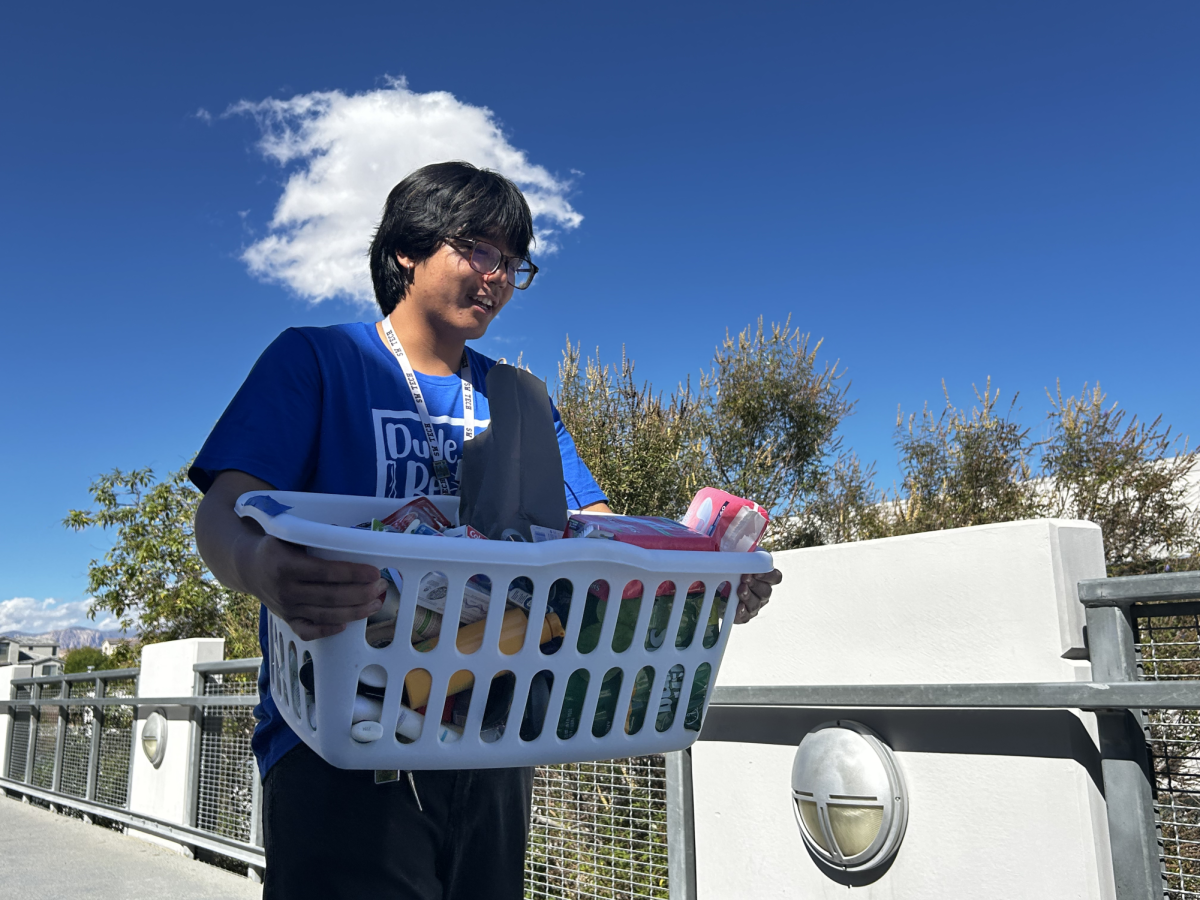Using as oxygen as the prime suspect in their ‘murder case,’ students in Jennifer Conders’ chemistry classes are creating reactions using hydrogen peroxide.
“We are comparing water and hydrogen peroxide to see how one extra oxygen can affect reactivity,” Conder said. “This will help students determine why carbon monoxide is poisonous and I wanted a more exciting way to teach the next concept which will help them to solve the cases.”
Students will solved the ‘murder case’ by using previous knowledge regarding oxygen and chemicals to understand the potential harm of carbon monoxide.
“The chemistry lab helped me understand everything we went over because we were actually interacting with chemicals and this helped build on what I already knew,” sophomore Ralph Quinto said. “This lab went along with our murder case and it helped me in understanding how carbon monoxide is poisonous and helped provide evidence to support that idea.”
For the lab, students added potatoes, yeast and dish soap into hydrogen peroxide and water and watched as the substances reacted with the hydrogen peroxide.
“I genuinely liked this trial because it’s interactive and it allows us to learn hands-on with hydrogen peroxide and water about bonding,” sophomore Brinn Harms said. “I feel like this will help me more in chemistry because I am a visual learner and this allowed me to see the concept and understand it better than I would have if we just read.”
By using a different method of teaching, students could learn about the potential toxicity of oxygen. They could then use this information analyze the ‘murder case’ more in-depth.
“I am hoping to teach students lab skills and problem solving skills so they can brainstorm together to solve the case,” Conder said. “I expect students to be able to understand how to see the difference of how hydrogen peroxide and water react so that they can predict why carbon dioxide and carbon monoxide react differently.”




![Weighing her options, senior Allyana Abao decides between going on a practice drive or calling an Uber. Though unlicensed, Abao has considered driving to be a significant milestone of teen independence despite alternatives that provide much easier solutions.
“You're able to be independent and not rely on others,” Abao said. “You're able to get a job, get things that you need, go places you need to go. I have so many places that I want to go to and I ask [my family] for so much. I want to be independent to where they know that I can do things on my own, so they know that they don't have to be there for me.”](https://southwestshadow.com/wp-content/uploads/2025/10/IMG_2922-1200x900.jpg)
![Looking at the board, former BSU secretary Christina Altaye begins to prepare for BSU’s second year of Club Feud. This year, “Are You Smarter Than a Ninth Grader?” will be replacing this event. “I think it’s a fun change [to Club Feud],” BSU Activities Director Hellen Beyene said. “[I think] it’s always fun to do something new and different.”](https://southwestshadow.com/wp-content/uploads/2025/10/Screenshot-2025-09-29-11.06.43.png)




![Displaying a QR code for students to scan, the flyer allows students to sign up and learn about their desired colleges as they visit throughout the school year. Many schools have had additional presentations for students to learn more about what they offer. “For me, I’m interested in criminal justice,” junior Zion Jefferson said. “I know that UNLV and Nevada State University have this major. But, [the college fair] is going to be beneficial, so I can see what other schools offer as well.”](https://southwestshadow.com/wp-content/uploads/2025/10/IMG_2721-1200x900.jpg)
![Working in the Student Success Office, Attendance Secretary Lordis Depiazza inputs a student’s absence excuse note. Students are required to bring an excuse note to the attendance office within three days of any absence. “Reminding students that being in school is important because it reflects towards your grades and being able to do any activities with the school,” Depiazza said. “[It] seems to get the students' attention about wanting to be in school.”](https://southwestshadow.com/wp-content/uploads/2025/10/IMG_8313-1200x800.jpg)
![Arranging the fabric on the floor for a new project, senior Sapphyre-Ann Leung plans out her attire for the next deadline. With the recent closures, students now had limited resources and less margin for error with the fabric and materials they had in stock while trying to reach strict deadlines. “Joann’s had a lot of high-end fabric for our fashion competitions,” Leung said. “We couldn’t just buy ten yards of fabric from Hobby Lobby or Walmart. Since [Joann Fabrics] is no longer open, we have to buy items online, which is way more expensive.”](https://southwestshadow.com/wp-content/uploads/2025/10/IMG_0038-1200x800.jpg)
